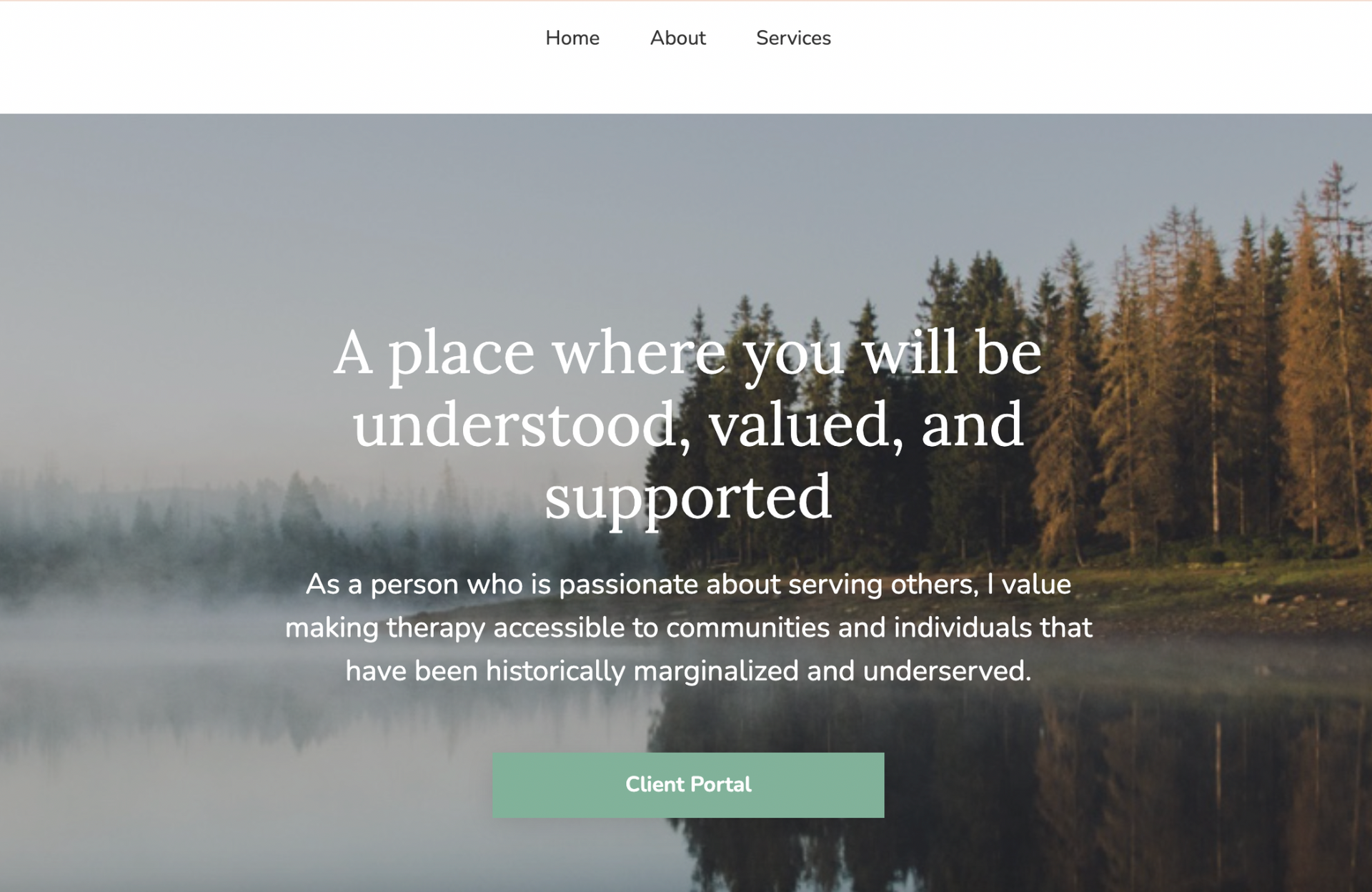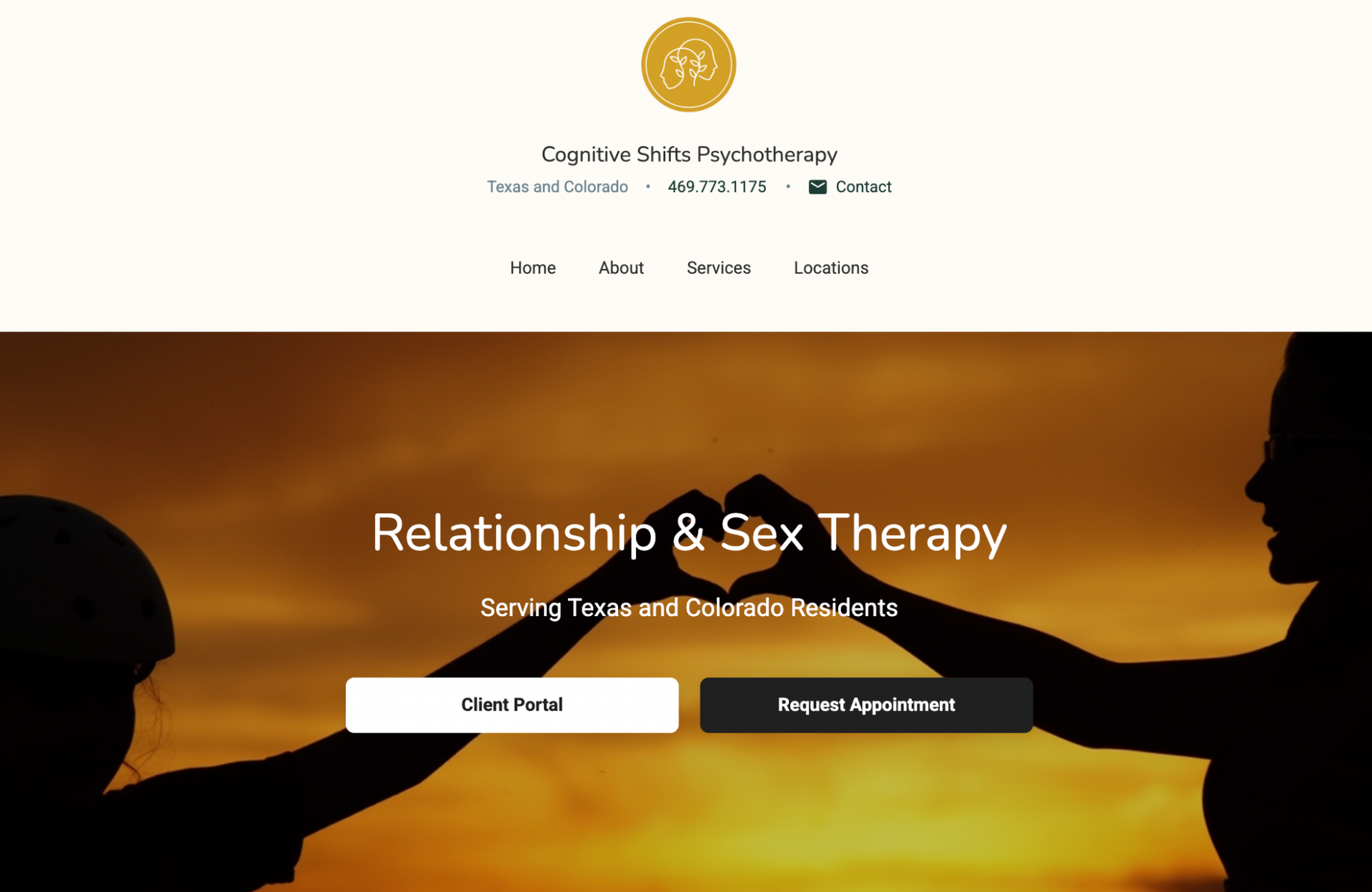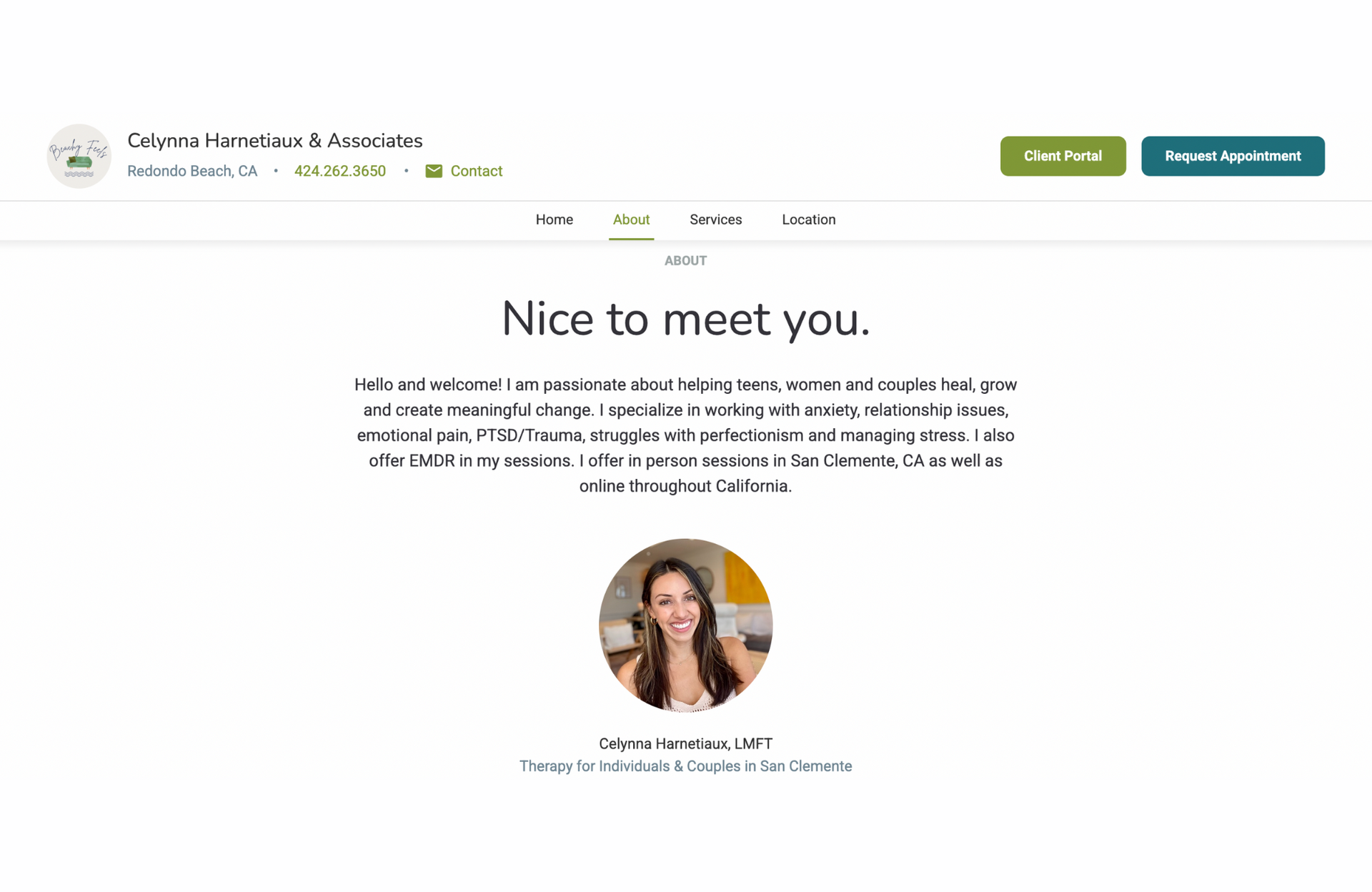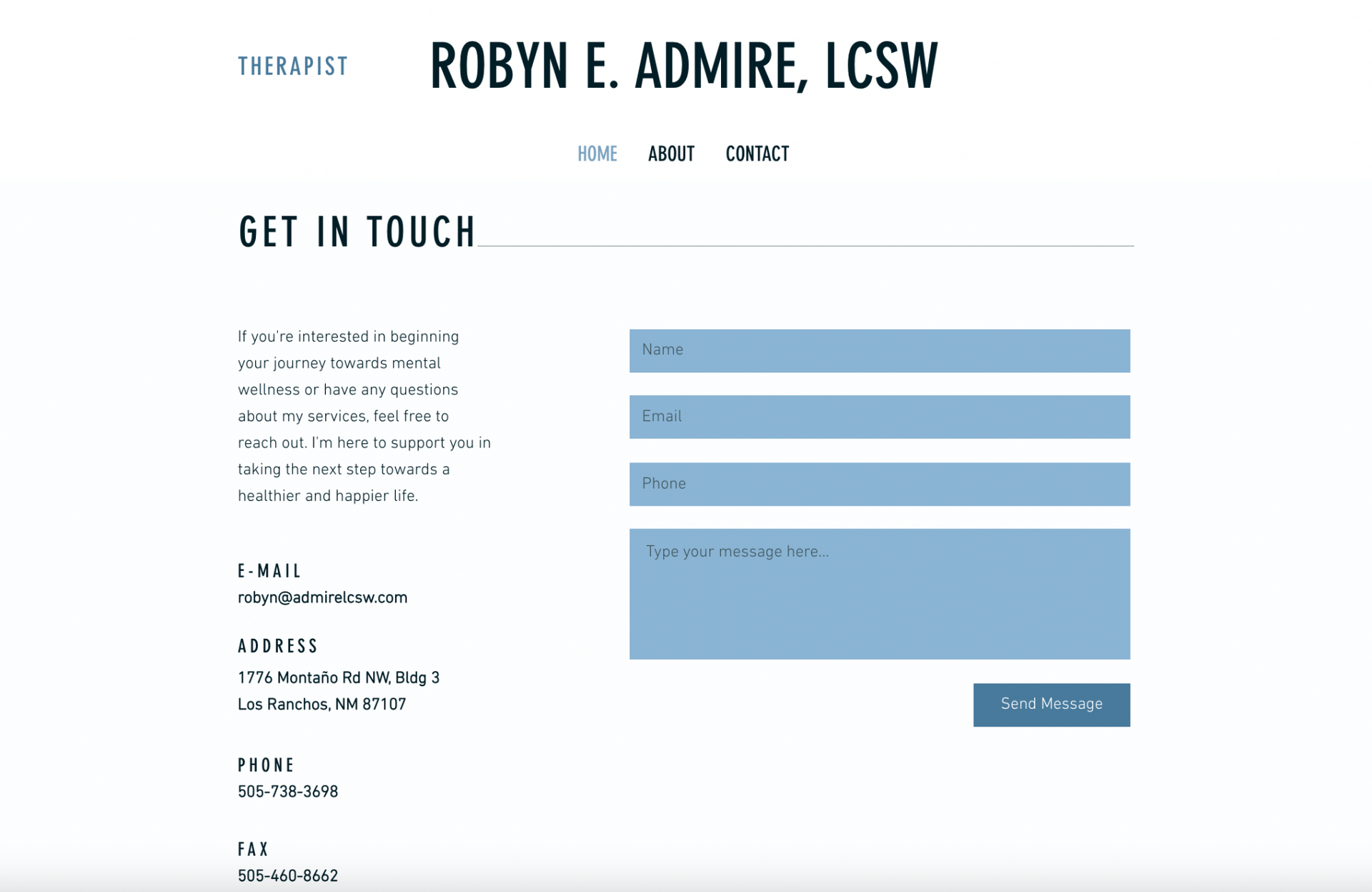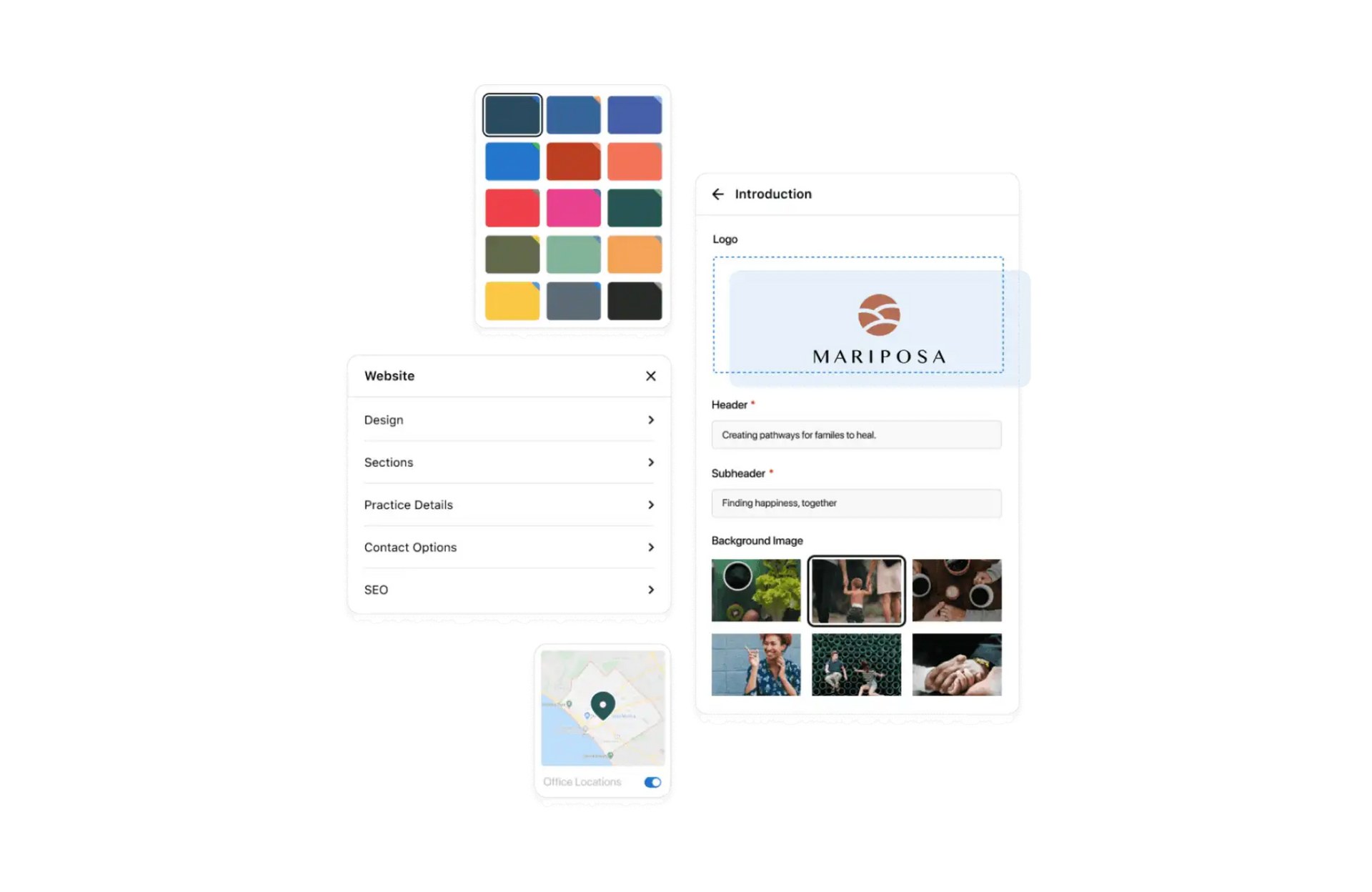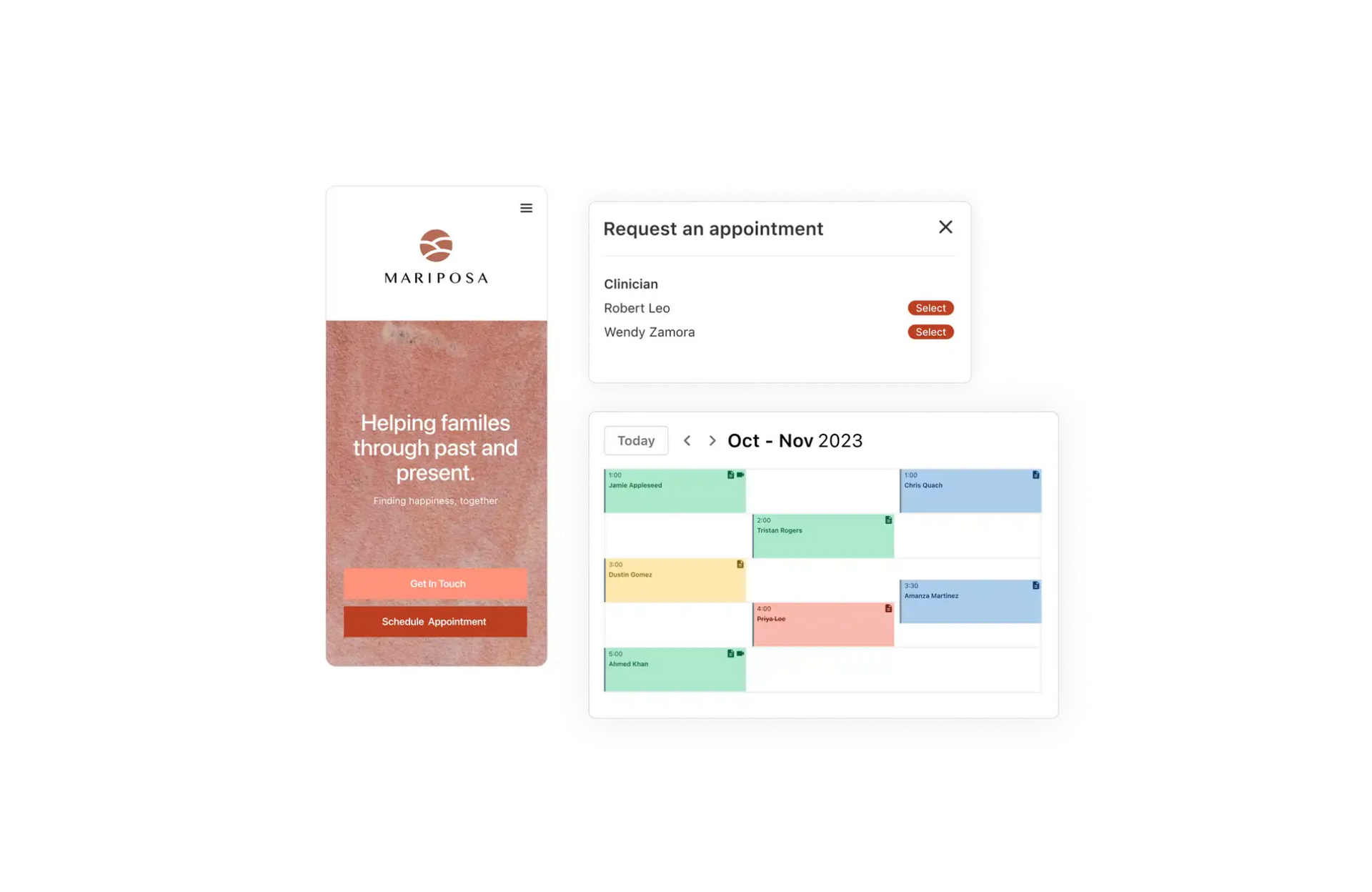Should you have your website in Simple Practice? Pros, cons, and website examples
If you’re a therapist, coach, or holistic practitioner, you’ve probably heard of Simple Practice. Maybe you even use it already for managing client sessions, scheduling, and billing. It’s an all-in-one practice management tool, which, on paper, sounds like a dream. You can run your entire practice in one place, including having a website—but here’s the big question: is that website actually helping your business grow?
If you’ve ever wondered why your website isn’t attracting as many clients as you’d hoped, why it doesn’t show up when people search for therapists in your area, or why it feels kind of… generic—you’re not alone. Many private practice owners start with Simple Practice, only to realize later that it’s not built for marketing, branding, or long-term business growth.
So let’s break it down—what does Simple Practice do well? Where does it fall short? And most importantly, what should your therapy website actually be doing for you?
In case you’re new here, I’m Natalia, a website designer for therapists and practitioners. I help private practice owners like you amplify their magic, gain visibility, and simplify their marketing efforts through strategic web design and SEO. And after working with countless professionals, I’ve seen firsthand the huge difference a custom website can make.
What is Simple Practice?
Simple Practice is a comprehensive practice management platform designed specifically for therapists and wellness professionals. It streamlines various administrative tasks, allowing practitioners to focus more on client care. Key features include:
- Scheduling & calendar management: Clients can conveniently book sessions online, reducing the need for manual scheduling.
- Billing & insurance processing: Simplifies handling payments and insurance claims, ensuring timely reimbursements.
- Secure client notes & documentation: Maintains HIPAA-compliant records, safeguarding client confidentiality.
- Telehealth & virtual appointments: Facilitates online therapy sessions, offering flexibility for both therapists and clients.
- Basic website builder: Provides a simple site that links to your scheduling system, offering an online presence without extensive setup.
Why many therapists use Simple Practice for their website
For busy therapists seeking a quick and integrated solution, Simple Practice's all-in-one platform is appealing. It eliminates the need to learn web design, set up hosting, or manage complex configurations. With just a few clicks, practitioners can establish an online presence.
However, while convenient, a Simple Practice website may not be optimized for growth. It serves as a functional tool but lacks the marketing capabilities essential for expanding a practice.
What does a SimplePractice website actually include?
If you’re considering using SimplePractice to host your website, here’s what you’re working with:
- A basic one page website with these sections: (Home,About, Services, Testimonials,Locations, Contact)
- 3 theme layout options
- Direct scheduling integration with your SimplePractice portal
- Basic contact form functionality
- Mobile responsiveness and HIPAA compliance
While that’s a decent start, it’s also where the platform's capabilities end—and that’s important to know.
Limitations to consider before using SimplePractice for your main website
SimplePractice’s built-in website tool is designed to be basic, not strategic. That’s not necessarily a bad thing—if all you need is a placeholder—but for private practice owners serious about getting consistent inquiries and showing up in Google search results, here are a few dealbreakers:
❌ Only 3 templates: You’re limited to a few pre-designed templates that aren’t customizable beyond text and colors. That means your site may look identical to hundreds of others using the same platform.
❌ No video uploads: You can’t embed or host intro videos, which are one of the most effective tools for increasing connection and trust with potential clients.
❌ A one page website: You can’t add more tabs or landing pages
❌ No blog or content strategy support: Blogging is one of the best ways to boost SEO and establish authority—but SimplePractice doesn’t support it. That’s a major visibility blocker.
❌ Limited call-to-action functionality: You can't create high-converting lead magnets or automated email list-building funnels directly through the platform.
So… is SimplePractice enough?
Here’s the honest answer: If you’re just getting started and need a quick, minimal web presence that syncs with your client portal, SimplePractice is okay for that.
But if your goal is to build a referral-generating website that ranks in search, builds trust, and converts visitors into clients, you’ll quickly outgrow its limitations.
Instead, a custom or semi-custom website—built on a platform specially for website design—gives you:
- Full design freedom
- Better SEO optimization
- Lead magnet and email marketing support or integrations
- Blog and content strategy integration
- Personalized, niche-focused messaging that sets you apart
A
high-performing therapist website should be more than just an online business card. It should actively
attract, engage, and convert potential clients. Here’s what it needs:
Essential features to consider for a private practice website
- SEO-optimized content – Your website should be structured and written in a way that helps it rank on Google. If potential clients can’t find you in search results, they won’t be able to book with you. A well-optimized website increases visibility and brings in organic traffic without relying on paid ads.
- Custom branding and messaging – Your website should reflect your unique approach, personality, and specialties. A generic, template-based design won’t communicate what makes you different. Custom branding includes your colors, fonts, and voice, creating an emotional connection with your ideal clients.
- A clear client journey – Visitors should immediately understand who you help, how you help them, and what steps they need to take next. If your website does not guide them smoothly from learning about your services to booking an appointment, they will likely leave without taking action.
- Mobile-friendly and fast-loading design – More than 60% of website traffic comes from mobile devices. If your site is not mobile-responsive or takes too long to load, visitors will get frustrated and leave. A good website loads within three seconds and adapts to any screen size.
- A blog section – Blogging is a powerful way to educate your audience while improving SEO. Regular, well-written blog posts answer common client questions, position you as an expert, and help your site appear in search results for relevant topics.
- Integrated email marketing – Many potential clients aren’t ready to book a session immediately. By offering a newsletter or free resource, you can collect emails and nurture these leads over time, keeping them engaged until they are ready to reach out.
- Strong calls-to-action (CTAs) – Every page on your website should encourage visitors to take action, whether it’s booking a call, filling out a contact form, or subscribing to your email list. Without clear and visible CTAs, potential clients may leave without ever reaching out.
- HIPAA-compliant contact forms – Since therapists handle sensitive client information, it’s essential that contact forms are
secure and compliant with privacy laws. A good website ensures that potential clients feel safe when submitting their information.
- Appointment scheduling integration – A website should make booking a session as easy as possible. Integrating scheduling tools like Simple Practice, or a CRM allows clients to book directly through your site, reducing barriers to working with you.
- Social proof (testimonials, certifications, media mentions) – Trust is essential in therapy. Including testimonials, credentials, and any media features on your website reassures potential clients that you are credible and experienced.
How to know if your website is helping or hurting your practice
Ask yourself these three questions:
- Can a new visitor understand what I do within five seconds of landing on my site? If your website doesn’t immediately communicate your services and audience, potential clients may lose interest quickly.
- Can a potential client easily find a way to contact me or book an appointment? If your contact forms, scheduling links, or email address are hard to locate, you’re making it harder for people to take action.
- Am I getting inquiries and new client bookings through my website? If your website isn’t generating leads, it may not be optimized for conversion, SEO, or user experience.
If you answered “no” to any of these, it might be time for a website refresh. A well-designed, SEO-optimized site can transform your practice by making it easier to find, more professional, and more effective at converting visitors into clients.
🔗 Need a site that works for you? Check out my custom web design services here.
Simple Practice vs. other website builders
Natalia Maganda- using duda and high level + providing website and seo management
Best for therapists who want a fully customized, SEO-driven website without the hassle
- Strategic branding and design that speaks directly to your ideal client
- SEO-optimized structure to help you rank higher in search engines
- Lead-generation systems built into your website to convert visitors into paying clients
- Ongoing support and marketing integration to ensure long-term growth
WordPress
Best for professionals who want full control and advanced customization
- Endless customization options with thousands of templates and plugins
- SEO capabilities to help you rank high on Google
- Powerful integrations for appointment booking, email marketing, and lead capture
- Scalable and flexible, making it ideal for therapists who want to expand services over time
Cons:
- Steep learning curve if you’re not tech-savvy
- Requires separate hosting and maintenance
Showit
Best for therapists who want a high-design, visually stunning website
- Drag-and-drop editor for complete creative freedom
- Strong SEO capabilities with full control over metadata and content optimization
- Seamless WordPress integration for powerful blogging functionality
- Highly customizable for those who prioritize branding over templates
Cons:
- More expensive than other builders
Wix
Best for beginners who want a simple, easy-to-use website
- All-in-one platform with built-in hosting and security
- Pre-designed templates that require minimal effort to set up
- Integrated scheduling features for therapists who want booking tools
- Basic SEO tools for ranking on search engines
Cons:
- Less flexible for long-term scalability
- Limited ability to add advanced SEO features
Squarespace
Best for therapists who want an elegant, user-friendly website with minimal effort
- Sleek, modern templates designed for a polished online presence
- Basic blogging and SEO tools included
- Easy-to-use interface with built-in analytics
- Works well for small therapy practices that don’t need complex integrations
Cons:
- Lacks flexibility compared to WordPress and Showit in terms of design and plugins
- Limited third-party integrations
Which website builder is best for therapists?
Choosing the right website builder depends on your long-term business goals. If you’re serious about building a website that doesn’t just exist but actively brings in new clients, a custom website designed for therapists is the best investment.
➡ Explore custom web design solutions for therapists here.
Here are 10 Simple Practice websites examples
Highlighting how therapists use its built-in scheduling, client management, and telehealth features. While these sites offer convenience, they often lack the flexibility, SEO power, and branding customization needed to truly grow a private practice online.
You can explore more Simple Practice Website examples here
It’s time to take your website seriously
If your goal is just to have a basic place to send booked clients, Simple Practice is fine. But if you want to attract new clients, build credibility, and grow your business, it’s not enough.
A website isn’t just an online business card—it’s your digital storefront, your first impression, and your best sales tool when done right. If you’re ready to build a site that actually works for you, let’s make it happen.
Ready to build a website that works for you? Explore my web design services for private practice professionals and therapists here.
Related reads:
- The Best Healthcare Work-From-Home Jobs vs. Private Practice
- How my clients recover from therapist burnout with this simple strategy
- The best therapist website template structure I recommend to all my clients
- The stress-free guide to becoming an entrepreneur in healthcare
- How to write a thoughtful therapy termination letter
- Private pay vs insurance: pros and cons for therapists

* AI Disclosure: This content may contain sections generated with AI with the purpose of providing you with condensed helpful and relevant content, however all personal opinions are 100% human made as well as the blog post structure, outline and key takeaways.
* Affiliate Disclosure: Some of the links on www.nataliamaganda.com may contain affiliate links meaning that I will get a commission for recommending products at no extra cost to you.

hello! i'm natalia
Latina, web design expert for mental health professionals.
I help ambitious life coaches, therapists and holistic leaders amplify their magic, gain visibility, and simplify their marketing efforts through strategic web design and content.






